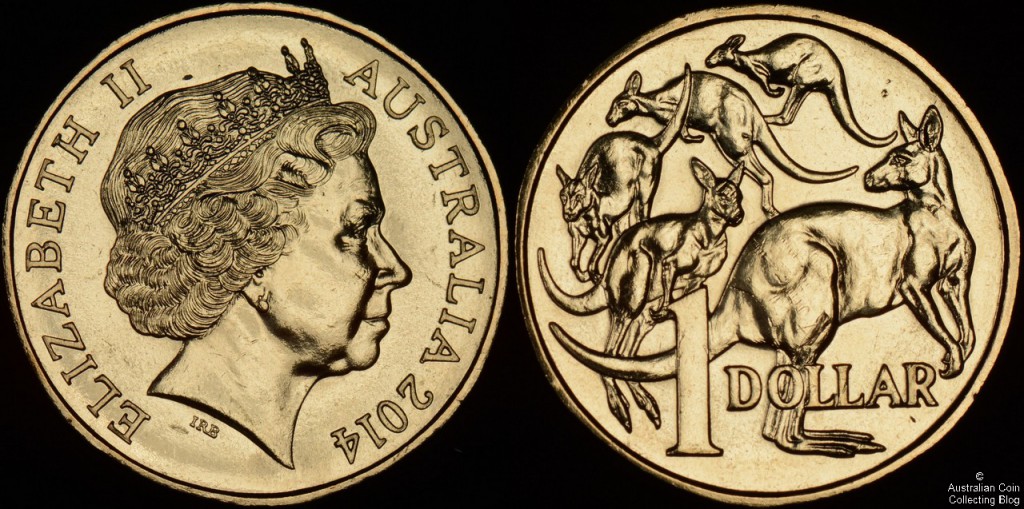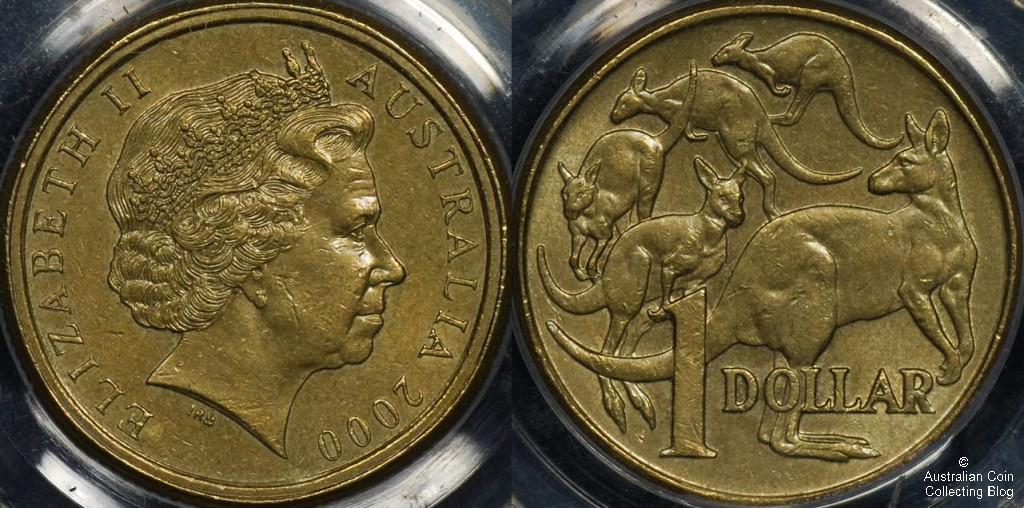A popular series for collectors and their collections is the Australian one dollar coins issues.The one dollar was first minted in 1984 when the $1 note was withdrawn from circulation. The reverse has the iconic 5 ‘mob of roos’ design by Stuart Devlin. It’s composition is 92% copper, 6% aluminium and 2% nickel which is nicknamed ‘alum bronze’. It is 25 millimetres diameter and weighs 9 grams. The one dollar coin is often released each year with commemorative designs depicting events of that year.
In 1991 the Royal Australian Mint introduced a new concept where if you visited the mint you could press your own coin on the gallery presses and keep the coin in a special folder. 1993 brought the first of the mintmarked $1 coins where a special letter was struck on the coin either at a show or fair. Also coins were released throughout the year depicting different letters. Often these mintmarks differed only very slightly and it was difficult to determine their origin. These mintmark dollars proved extremely popular with the public and the mint increased their releases to include other alum bronze collector dollars the same size and weight that weren’t for circulation. Because of their size and similarities to the circulation dollars they are often found in circulation and are eagerly sought after by ‘coin noodlers’. A particular example is the 2000 Victoria Cross dollar which was issued in a special folder at $5 and now retails for $250. These have been known to turn up occasionally in poker (or slot) machines.
In the year 2000 there was a mistake at the Royal Australian Mint during production of the dollars. The “mob of roos” reverse die was accidently partnered with the Queen Elizabeth II obverse die of the Australian 10 cent piece. This 10 cent die was only slightly smaller than the normal dollar obverse die. Coins were released into circulation and to numismatists delight the error was found. These dollars could easily be found in change so the “mule” hunt began. An average example of a mule today could be worth $400 and a high grade example worth $4000.
2006 brought more interest to the one dollar series with the RAM incorporating a new method of production; the pad printed design. This colored series featured ocean animals and is very popular with collectors. Now you would surely notice if one of those ended up in your change! These are NCLT issues not intended for circulation. Read more about this in my previous post.
This year the RAM did a rethink of the term mintmark and introduced some other terms to help distinguish between the dollar coins and where and how they were struck. The terms counterstamp, privymark and mintmark are now used. You can learn about the differences of these coins in my previous post here.
To date there are over a hundred different types and mintmarked coins possible to collect of the 25 millimetre dollar. To collect the entire series of the alum bronze dollars takes a lot of effort and with the mint issuing more and more every year it is becoming difficult on one’s wallet keeping up with them all. A new scheme the RAM has come up with involves putting unique dollar designs in mint sets or uncirculated baby sets, forcing collectors to purchase the entire set and break it up just to get the dollar coin. Some of these newer releases seem to be really just novelty coins and haven’t proved successful for investment purposes. I might have to rethink my collection……….



